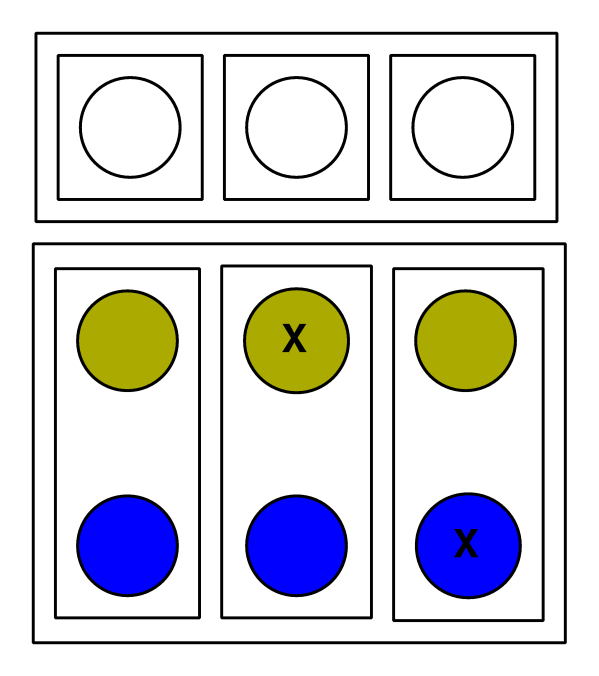
Hello Children,
let's play a little game, called Pick-A-Puck(TM).
This game demonstrates the properties of a selection algorithm based on the actual input set in contrast to a mixed decision algorithm based on meta-information about possible combinations in a truth-table.
 |
| Basic Selection Setup |
So let's say you pick the yellow puck from the first box. It does not have an X on it. That means, that you can no longer pick the yellow puck from the second box with the X on it. But you can pick the yellow puck from the third box.
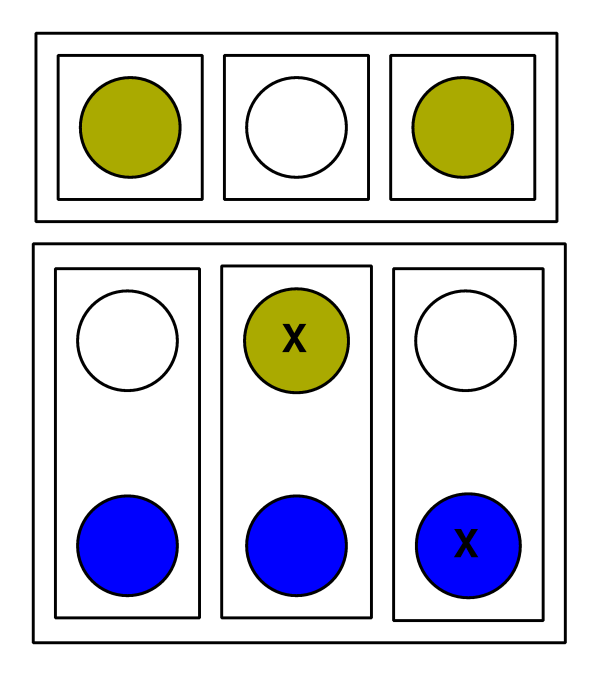 |
| Pick yellow from first, yellow from third |
Since you cannot pick the yellow puck with the X from the second box, you must pick the blue puck from the second box.
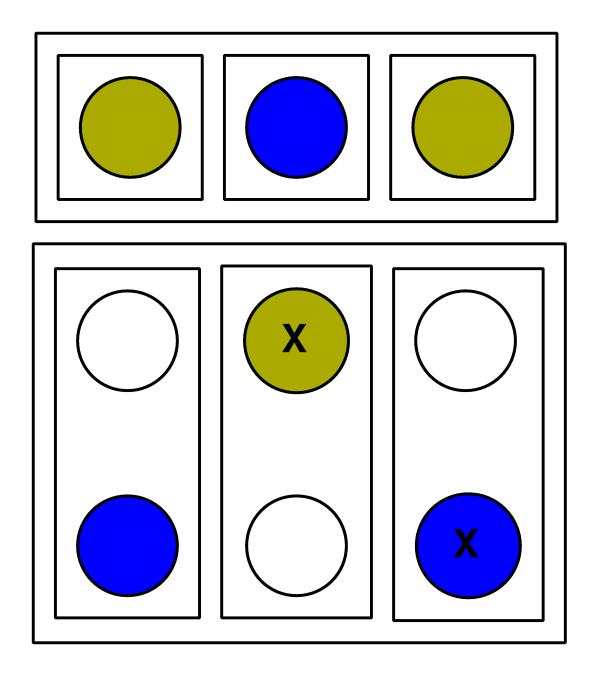 |
| Pick blue from second box |
And you win! :)))
You could have picked the blue puck with the X from the third box instead of the yellow one without the X.
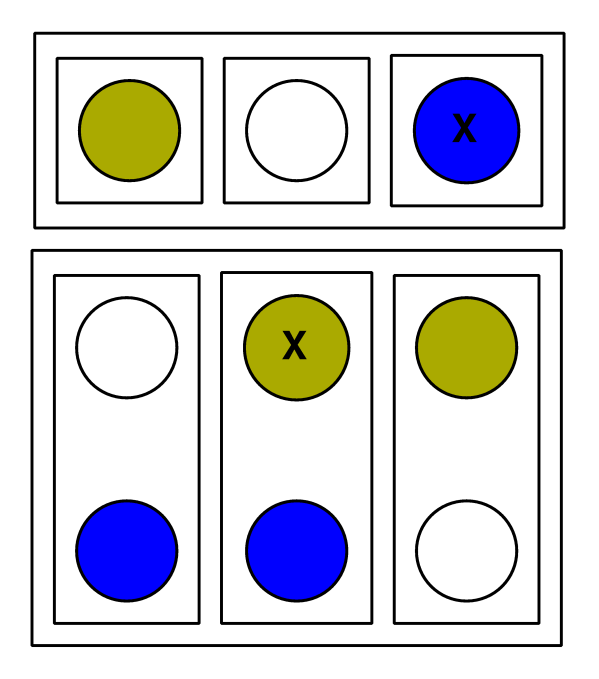 |
| Pick blue with X from third |
But now you cannot pick the yellow puck with the X from the second box and you can also not pick the blue one without the X.
So, you loose :(.
You can also play this game with more than three boxes.
You can also play this game with three pucks per box.
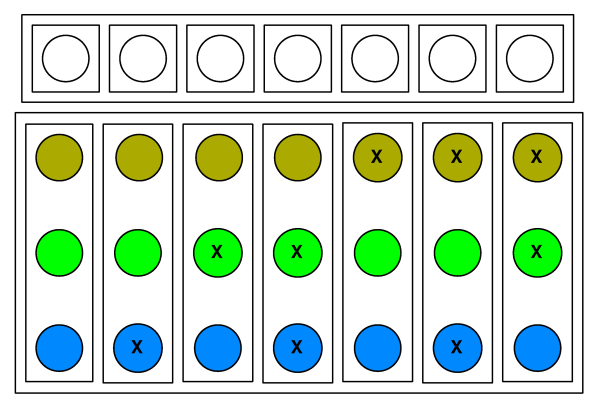 |
| Three balls per box |
If you want to make the game a little harder, you can put pucks in the boxes and draw little arrows on the glass lid. An arrow between two pucks means, that if you pick one of them, you cannot choose the other one.
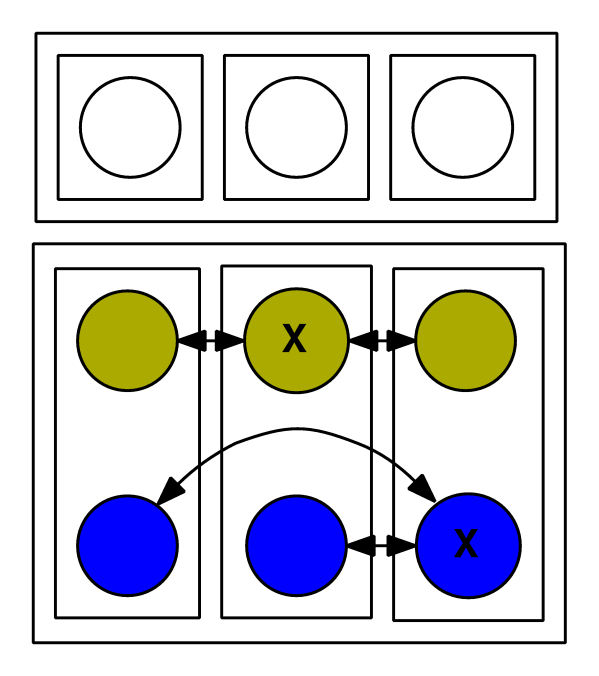 |
| Draw arrows on the glass lid |
When you have finished drawing the arrows, you put a piece of paper or carton under the glass lid, so that the pucks cannot be seen anymore.
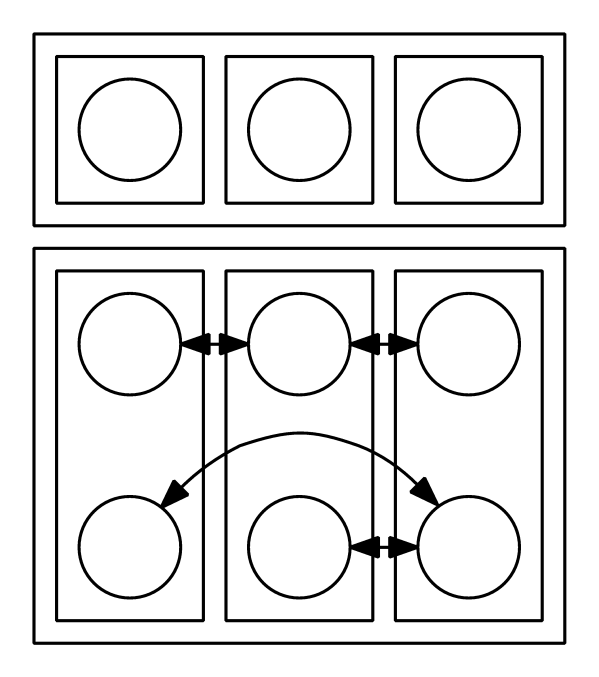 |
| Put paper or carton under the glass lid |